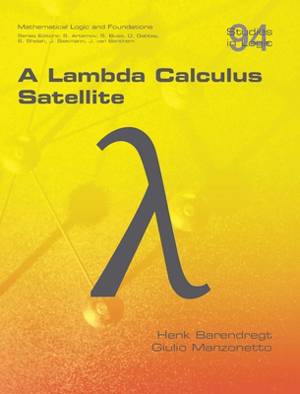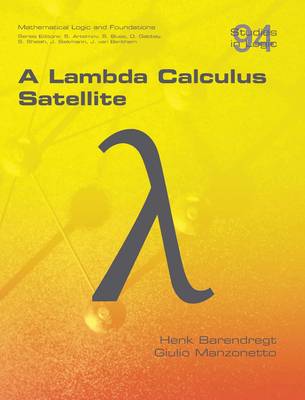
- Afhalen na 1 uur in een winkel met voorraad
- Gratis thuislevering in België vanaf € 30
- Ruim aanbod met 7 miljoen producten
- Afhalen na 1 uur in een winkel met voorraad
- Gratis thuislevering in België vanaf € 30
- Ruim aanbod met 7 miljoen producten
Omschrijving
In 1936 the notion of intuitive computability was operationalized in two different ways: via Turing machines and via lambda-calculus. The difference consisted in manipulating beads (bits) for the former approach versus manipulating trees (rewriting lambda-terms) for the latter. Both proposals turned out to formalize the same notion of computability, and led to the Church-Turing Thesis, claiming that intuitive computability is captured in the correct way.
This resulted in the foundation of imperative and functional programming. Variants of lambda-calculus are being used in another powerful field of applications, namely proof-checking, the basis for certifying mathematical theorems and thereby high tech industrial products. These two areas of research are still being actively investigated and make lambda-calculus a major tool in the present stages of science and of the industrial revolution.
In this book lambda-calculus is considered from another angle: as a study of these tree-like structures, investigating the relation between their shape and their action. This is like studying numbers qualitatively, rather than for their applications dealing quantitatively with objects and phenomena in the world.
Barendregt's book 'The Lambda Calculus, its Syntax and Semantics' (1981/84), does treat the subject from the same methodological viewpoint, and includes several open conjectures. In the more than four decades that have passed, most - but not all - of these conjectures have been solved, sometimes in ingenious PhD theses. This 'Satellite' to the aforementioned book presents these solutions in a uniform style and adds other topics of interest.
Specificaties
Betrokkenen
- Auteur(s):
- Uitgeverij:
Inhoud
- Aantal bladzijden:
- 602
- Taal:
- Engels
Eigenschappen
- Productcode (EAN):
- 9781848904248
- Verschijningsdatum:
- 12/01/2023
- Uitvoering:
- Hardcover
- Formaat:
- Genaaid
- Afmetingen:
- 203 mm x 254 mm
- Gewicht:
- 1428 g

Alleen bij Standaard Boekhandel
Beoordelingen
We publiceren alleen reviews die voldoen aan de voorwaarden voor reviews. Bekijk onze voorwaarden voor reviews.











